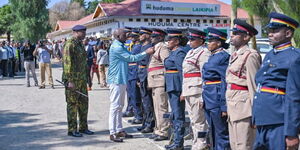Kenya launched its first unified National Action Plan on Chemical, Biological, Radiological and Nuclear (CBRN) security on November 27, 2025, at the Kenya Police Hazardous Materials (HazMat) Training School in Embakasi.
The event included a live simulation of a chlorine gas leak, involving the Directorate of Criminal Investigations (DCI) and Kenya Police Service teams. The simulation featured three critical casualties and replicated response protocols for a chemical release.
The plan addresses compliance with international and national standards for handling hazardous materials, including requirements for importers, exporters, and manufacturers of toxic chemicals to maintain records and reports.
It also covers managing chemical waste through treatment in licensed facilities before disposal, as outlined under the Environmental Management and Coordination (Waste Management) Regulations, 2006, and the Sustainable Waste Management Act, 2022.
"Today’s launch marks a key milestone and proves our country now speaks with one resolute voice on CBRN preparedness and response," remarked James Keter, the Director General of Kenya Nuclear Regulatory Authority
The plan draws from incidents such as the February 1, 2024, explosion at an unlicensed liquefied petroleum gas depot in Mradi, Embakasi, where a truck loaded with cylinders detonated.
The blast killed at least three people and injured 280 others, with witnesses reporting a suspected gas leak sound prior to the fire that damaged homes and warehouses in the densely populated area.
The site's operator had faced multiple rejections from the Energy and Petroleum Regulatory Authority for safety violations due to proximity to residences.
Keter further gave the example of a flight that was forced to return to Nairobi on April 27, 2025, following concerns over the potential leakage of hazardous biological material.
According to the passengers, the flight had been turned back 25 minutes after take-off due to a possible leak of Tuberculosis Bacilli, a biological agent, in the cargo hold.
Principal Secretary for Internal Security Raymond Omollo referenced the 1998 U.S. Embassy bombings and the COVID-19 pandemic as defining experiences that shaped the plan.
The Ministry of Interior reaffirmed that Kenya will not acquire, produce, or host chemical, biological, or nuclear weapons, nor will it support non-state actors who seek them.












